Hovenweep – a derivative of a Ute word meaning “deserted valley.”
Mesa Verde National Park was the main attraction to the area to see Ancestral Pueblo cliff dwellings. Everyone has heard of this amazing place. This was not our first time there. We had last visited when our son was young. As it so often does, it just did not live up to my memory. There were a few too many people disrespectful to the history and way too many just interested in a quick selfie.
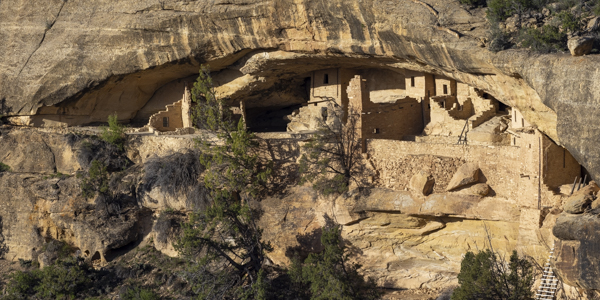
Balcony House; The complex is 264 feet long sitting in an alcove that is 39 feet deep. This structure sits about 600 feet above the canyon floor. Construction started around 1180 AD and was active for about 100 years. This is the best-preserved site in Mesa Verde NP
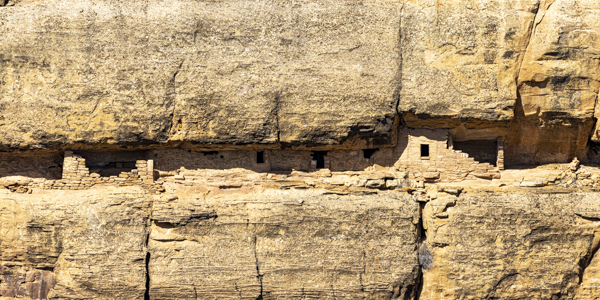
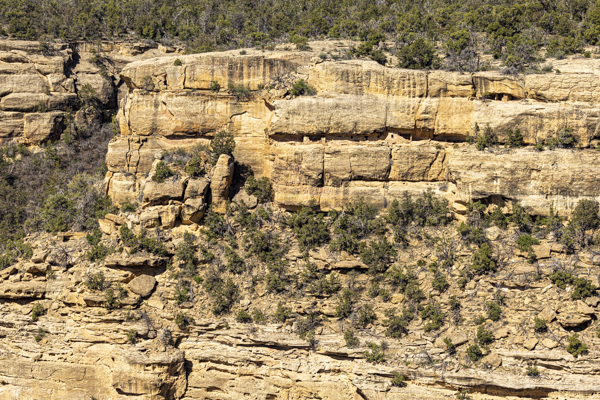
House of Many Windows is a small cliff dwelling perched on a ten-foot-wide ledge in Cliff Canyon. Look closely at the photo on the right, you can barely make out the structure about two-thirds of the way up the cliff. Its many windows are actually doorways into rooms made of hand-shaped sandstone rock. House of Many Windows is comprised of 15 rooms, and there is evidence of a kiva. This cliff dwelling was home to an Ancestral Pueblo family in the 1200s.
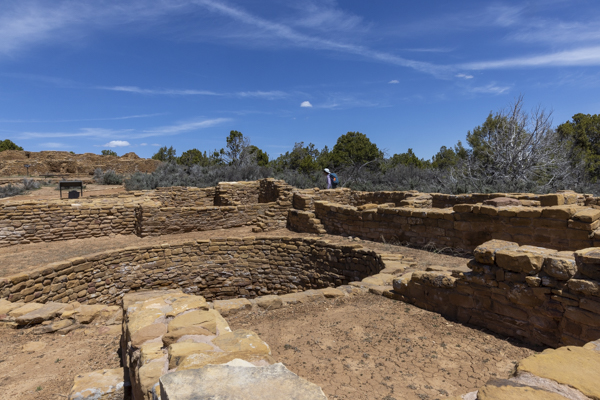
One of Mesa Verde’s most easily accessible ruins is the Far View Sites. These sites offer a fascinating window into the ancient civilization of the ancestral Pueblo people, predating their occupation of the cliff houses. The Far View Sites consist of a collection of dwellings, including pueblos with multiple rooms and kivas. These structures were strategically positioned to take full advantage of the awe-inspiring panoramic views. Constructed with great skill, using sandstone blocks, they demonstrate the Ancestral Puebloans’ advanced architectural and engineering expertise. Additionally, the site features a reservoir designed to capture and store water from the early season rains and natural springs.
Much of what was available in Mesa Verde was closed for renovation and road work while we were there, but Sherrie did manage to find a hike for us that was more than a little “sketchy.” The Petroglyph Trail, a 2.5-mile loop, was much more complex than suggested in the available literature. At one point, we had to use hand-holds cut into the rock to climb from one ledge to another. At the end of the loop was a sign warning hikers of the dangers the ancient trail presented. Maybe we should have noticed that at the start.
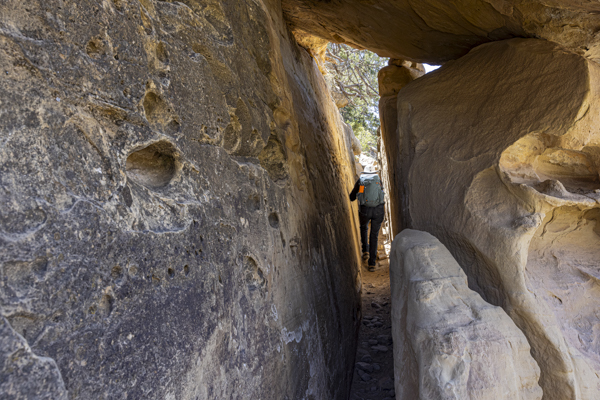

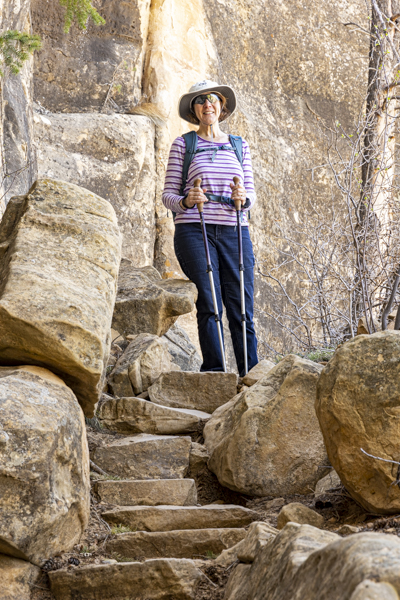
Sherrie leading the march and waiting for me to catch up along the Petroglyph Trail
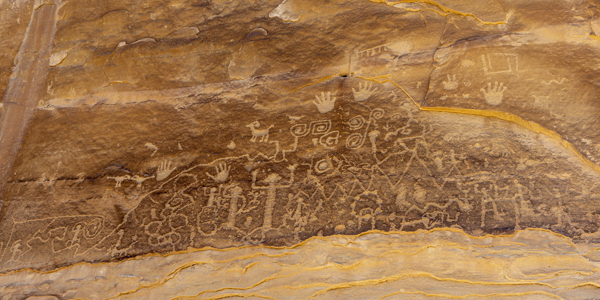
And then we were told about Hovenweep National Monument, about 50 miles west on the border of southeastern Utah and southwestern Colorado. Mesa Verde National Park, at over 52,000 acres National Monument, offers a well-developed visitor experience with a visitor center, museum, campgrounds, and guided tours. Visitors can explore several cliff dwellings and learn about the culture and history of the ancestral Puebloans through interpretive exhibits and ranger programs. On the other hand, Hovenweep National Monument, less than half the size of its more well-known neighbor, offers a more remote and tranquil experience. The smaller size of the park along with there being no crowds at Hovenweep creates a more intimate atmosphere, allowing visitors to appreciate the solitude and natural beauty of the area. The collection of structures all along both sides of the canyon gave us the feeling of close-knit communities spread throughout the area, something that was missing from Mesa Verde. We wondered what the lives of the 150 people that lived in the small canyon complex were like.
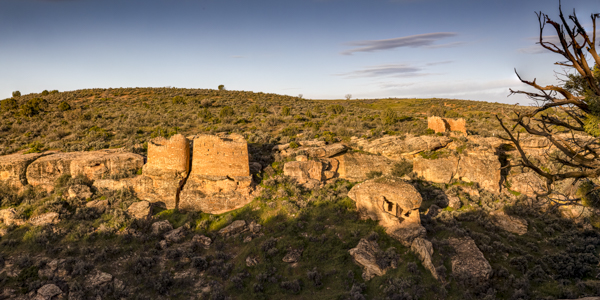
A sunrise walk along the Rim Trail loop offers beautiful views of the Twin Towers structure and Eroded Boulder House in Hovenweep, National Park.
Both sites feature impressive stone masonry structures, but the architectural styles differ. Mesa Verde is renowned for its well-preserved cliff dwellings, built into the sides of cliffs and canyons. These elaborate multi-story structures, such as the famous Cliff Palace, showcase the advanced engineering skills of the ancestral Puebloans. On the other hand, Hovenweep’s structures are characterized by standalone towers and smaller villages perched on canyon rims, displaying a different architectural approach.
Hovenweep’s Castle structure is a striking example of ancient Puebloan architecture. Nestled within a canyon, it showcases a cluster of multi-story stone towers built between the 13th and 14th centuries. With intricate masonry and strategic placement, it is a very good example of the ancestral Pueblo people’s engineering skills and rich culture.
Early one morning, while strolling along the Rim Trail loop, the tranquil ambiance was dominated solely by the gentle rustling of the wind through the Juniper trees. Suddenly, an abrupt, piercing screech shattered the serene atmosphere, causing us to halt in our tracks, bewildered by its origin and location. After a brief pause, the noise resurfaced, growing significantly louder as it reverberated off the canyon walls. This pattern of screeching, followed by silence, persisted for an extended period as we continued along the trail.
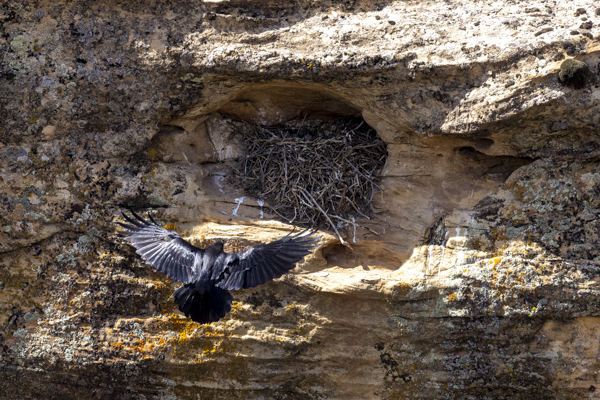
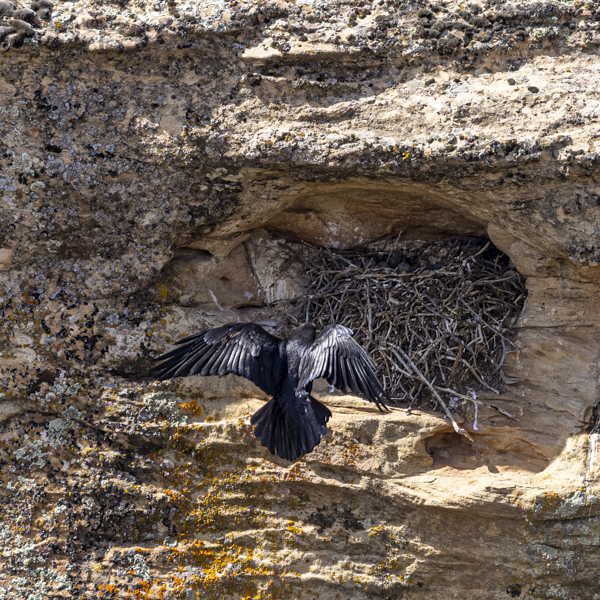
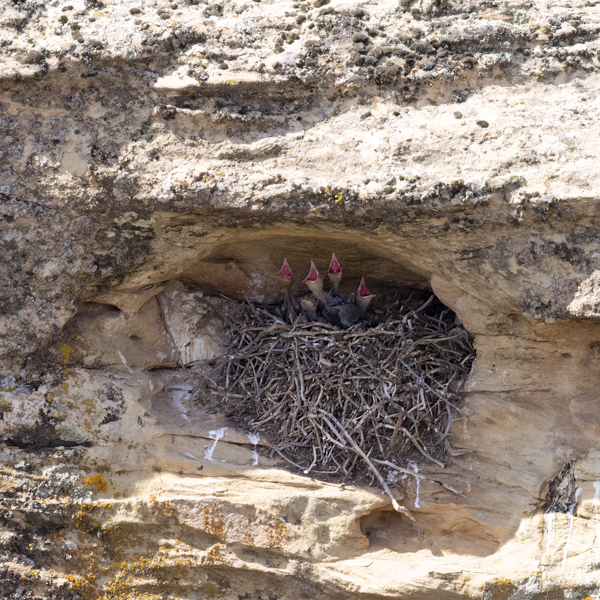
As we gradually approached the head of the canyon, the source of the noise became apparent. We spotted a sizable nest within a small alcove on the opposite side of the canyon wall. There were five raven nestlings demanding breakfast. We stopped to watch the repeated process a few times.
The square holes in the towers are where the wooden floor and ceiling timbers were set.
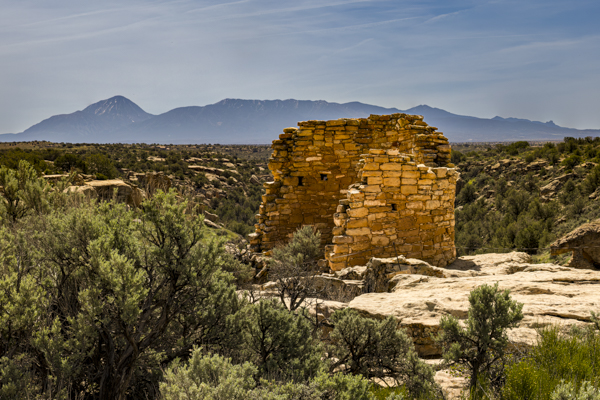
Both sites are rich in archaeological significance and provide insights into the lives and achievements of the Ancestral Puebloan people. Whether visitors prefer the grandeur of the cliff dwellings at Mesa Verde or the serene tower structures at Hovenweep, both destinations offer a fascinating look at an ancient civilization and stunning landscapes. While writing this, I have decided that we must go back to see all that was missed this time.
Dennis
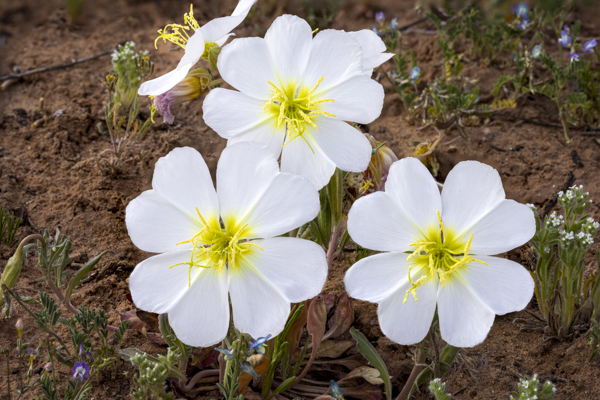
One of the benefits of visiting the area in spring is seeing all of the flowers blooming in the arid desert.

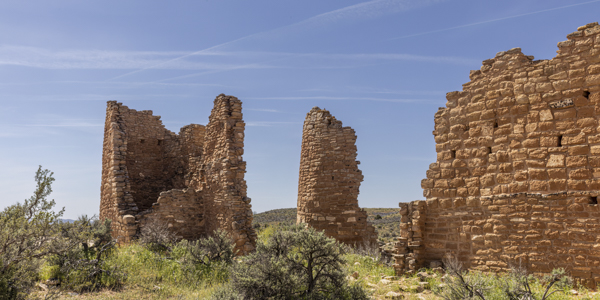
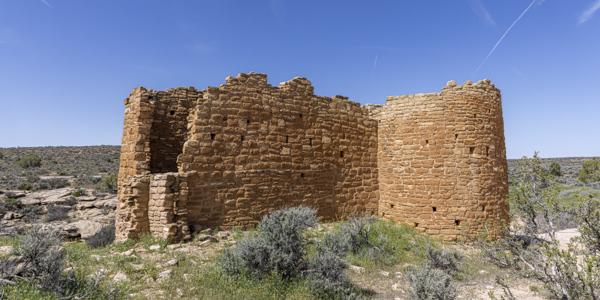
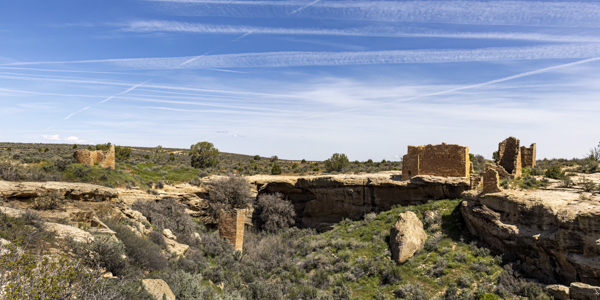



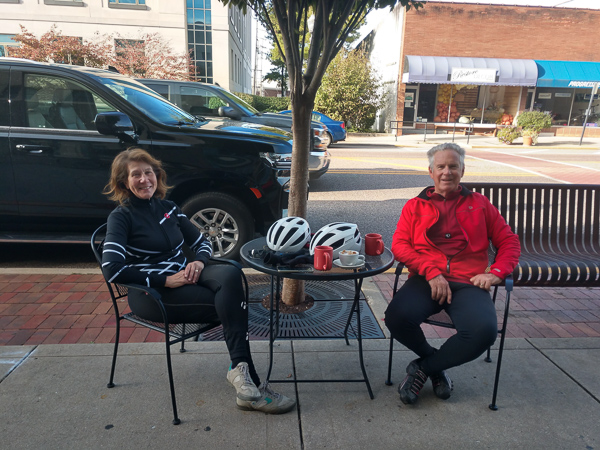
Great shots Dennis, that Balcony house is quiet incredible. Learned some more about Mesa too!
Hi Jayne – wish I had a few more followers like you. We were going to take the ranger tour through the site but the ladder looked to sketchy. Maybe next time.
Another fascinating adventure for you two! Nicely written. Enjoyed the photographs!
Hey Meagen, Glad you follow us. We really enjoyed our time there.